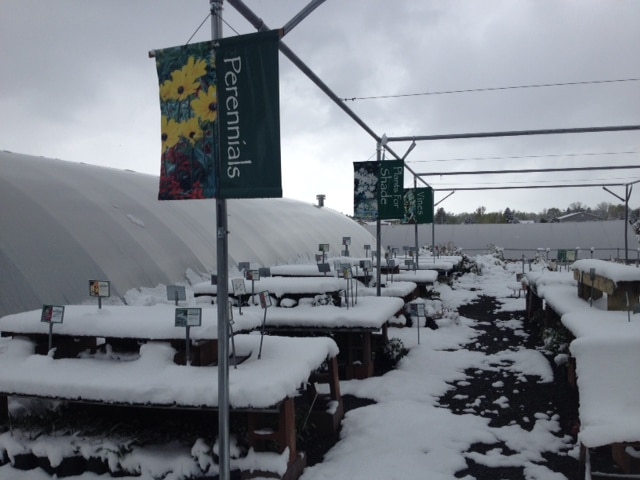Gardening in Colorado can be challenging.
Hot and Dry
Due to the high elevation, sunlight is frequently of high intensity and the humidity generally is low. This will require more frequent water applications to your lawn, landscape and flower pots throughout the year.
Poor Soils
Most population centers are on heavy clay soil. These soils have poor aeration that limits root growth. The best solution is to improve the soil by adding organic matter, like Nature’s Yield Compost. Then look to Colorado native plants native to your soil conditions for more options. Creek Side grows over 350 different varieties of perennials that have been selected to withstand Colorado’s harsh growing conditions.
Wacky Weather
Heavy, wet snows in the late spring or early autumn are common in Colorado. Trees, shrubs and perennials are caught in full leaf or just at the peak of bloom. These “limb-breaker” storms cause severe damage that leaves permanent scars and tends to keep trees to smaller-than-normal size. Not much can be done to prevent this, just be aware.
Occasionally, Colorado will experience frosts when plants aren’t ready to cope with them, like around Mother’s Day. Don’t be too anxious to set new plants out in the spring unless they are appropriate for early spring conditions.
The real killers, however, are the infrequent but rapid changes from warm, balmy weather to cold, subzero temperatures. Such freeze injury leaves crippling marks on trees and shrubs for years and serves to eliminate many plants with borderline hardiness.
Good Things
Colorado’s many days of sunshine, while leading to some problems already mentioned, enables gardeners to grow some of the best flowers in the nation. The high light intensity produces strong-stemmed plants and flowers with extra brilliance.
Winter sunlight melts snows at lower elevations, reducing snow mold diseases in lawns. The cool, crisp nights and warm days of summer produce healthy lawns. These same climatic conditions enable the home gardener to produce excellent potatoes, cabbage, lettuce, broccoli, cauliflower and other cool-season vegetables.
The lower humidity not only helps to make the cold days seem less cold and hot days less hot but discourages many plant diseases that are common in more humid areas. Gardeners who are patient, know how to select plants that will do well, and manipulate the soil and microclimate will be amply rewarded.

